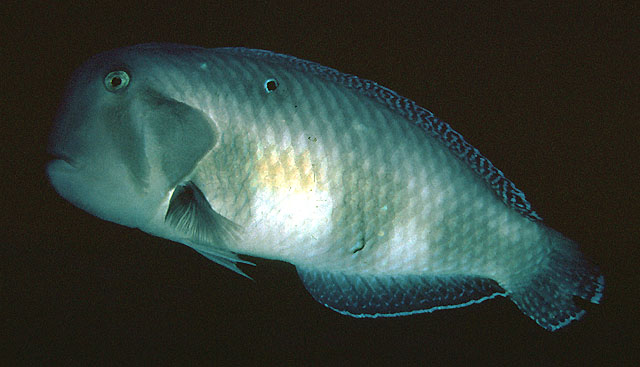| Labridae (Wrasses), subfamily: Xyrichtyinae |
| 42 cm TL (male/unsexed) |
|
reef-associated; marine; depth range 1 - 100 m |
| Indo-Pacific: Red Sea and East Africa to the Society Islands, north to southern Japan and Hawaii, south to the Lord Howe Island. Eastern Pacific: Gulf of California to Panama and the Galapagos Islands (Ref. 5227). |
|
Dorsal spines (total): 9-9; Dorsal soft rays (total): 12-13; Anal spines: 3-3; Anal soft rays: 12-13. Identified by the dark vertical bar below the eye. Usually with 5 dark bars when adult and belly of female turns red. Juveniles with black anal fin and two large ocelli, thinly edged with white, in dorsal fin (Ref. 48636). First two dorsal spines form a separate fin. Juveniles this fin forms a long, bannerlike filament but shortens with age (Ref. 37816). |
| Usually solitary in lagoon and seaward reef areas with fine to loose, coarse sand bottoms (Ref. 1602). Juveniles sometimes in shallow estuaries (Ref. 48636). Adults rare in less than 20 m (Ref. 9710). Benthic and benthopelagic (Ref. 58302). Dives into sand to sleep safely at night or to hide when alarmed (Ref. 9311, 90102). Feed on hard-shelled invertebrates, including mollusks and crustaceans (Ref. 9311). Juveniles mimic drifting dead leaves by holding the elongate detached front part of dorsal fin forward over head. Good to eat, flesh very white (Ref. 7364). Minimum depth reported from Ref. 27115. |
|
Least Concern (LC); Date assessed: 25 March 2009 Ref. (130435)
|
| harmless |
|
Type locality of Xyrichthys puniceu (Ref. 35918). Reported from Guangdong and Hainan (Ref. 47843). |
Source and more info: www.fishbase.org. For personal, classroom, and other internal use only. Not for publication.

